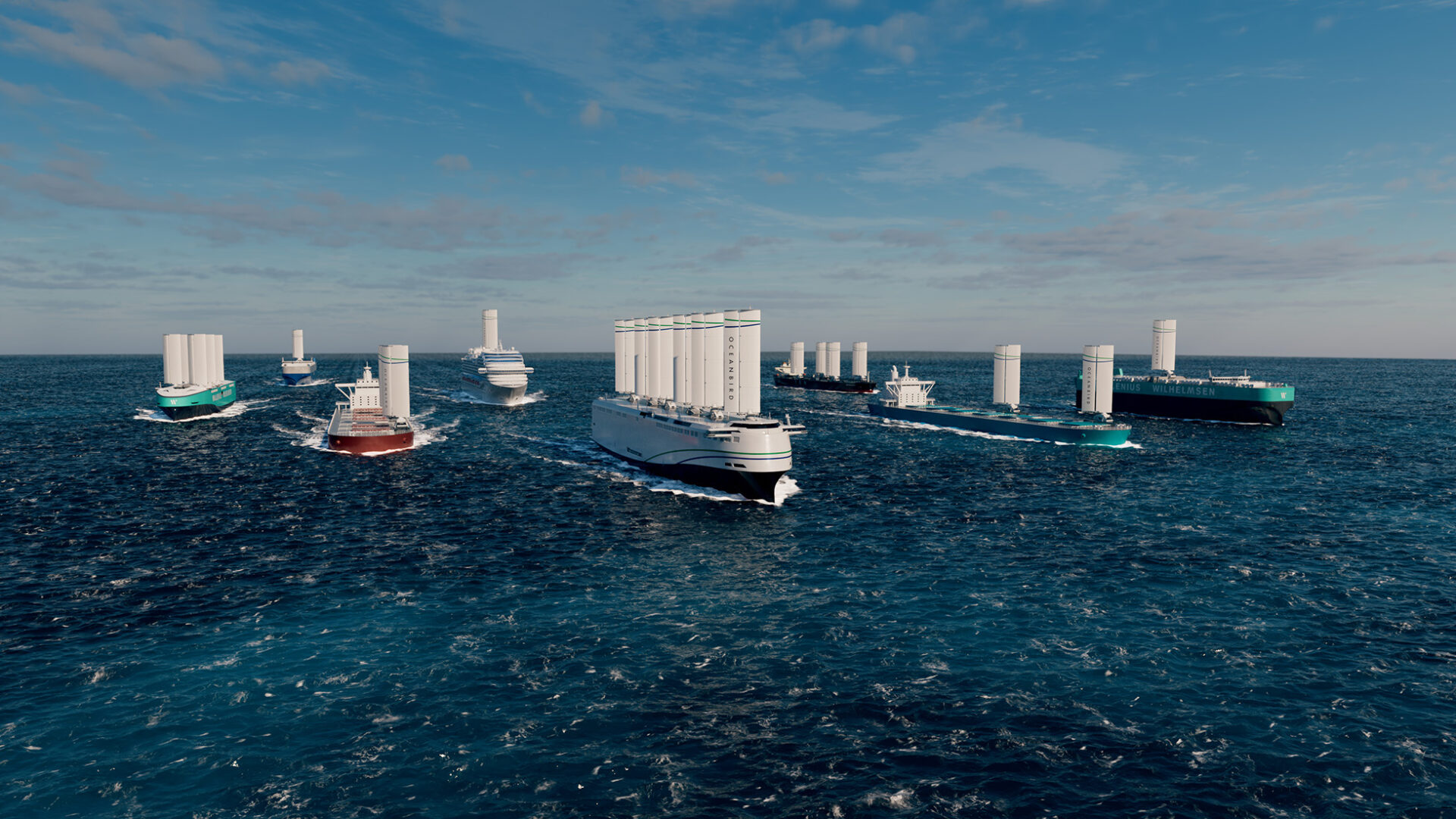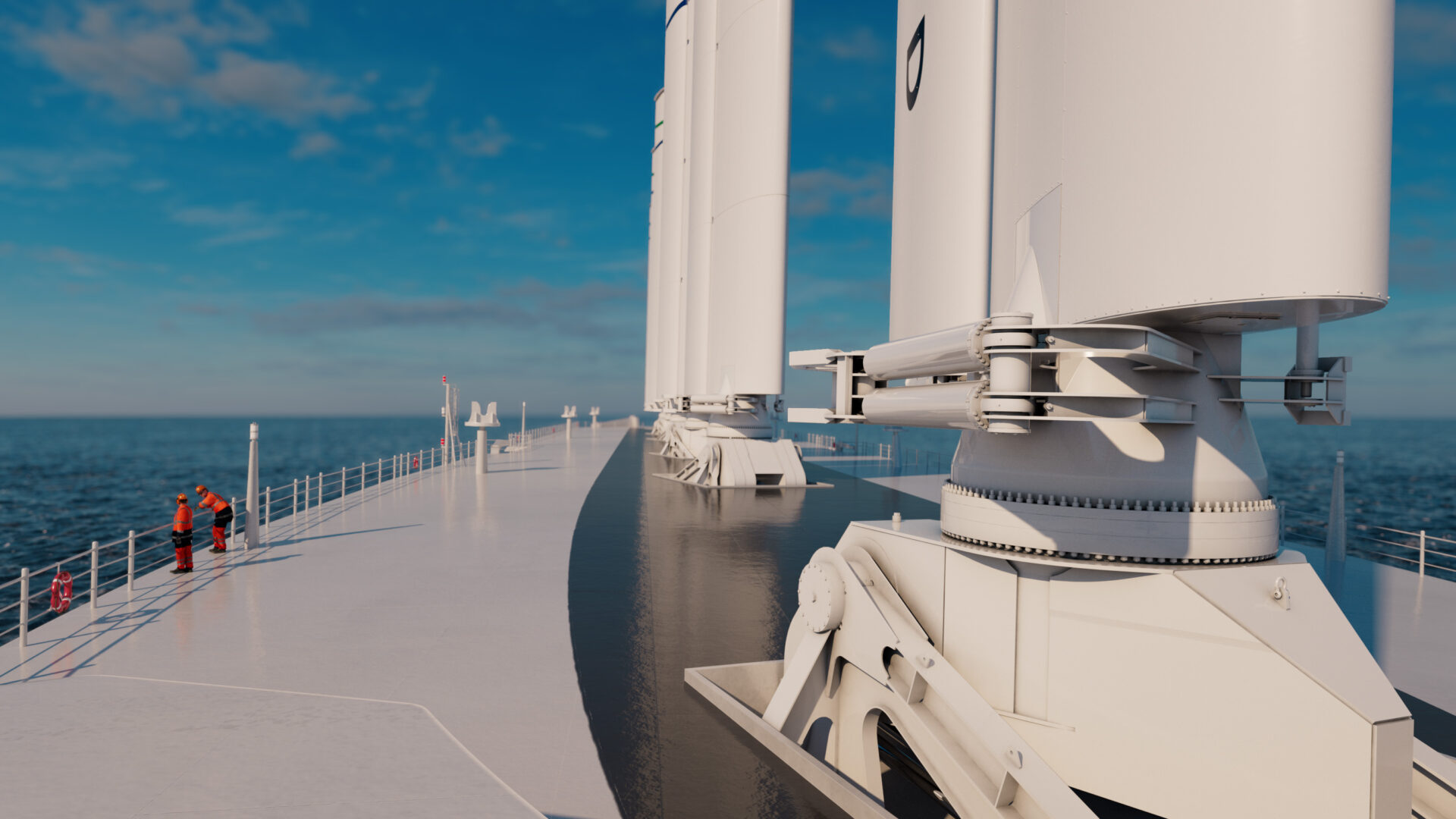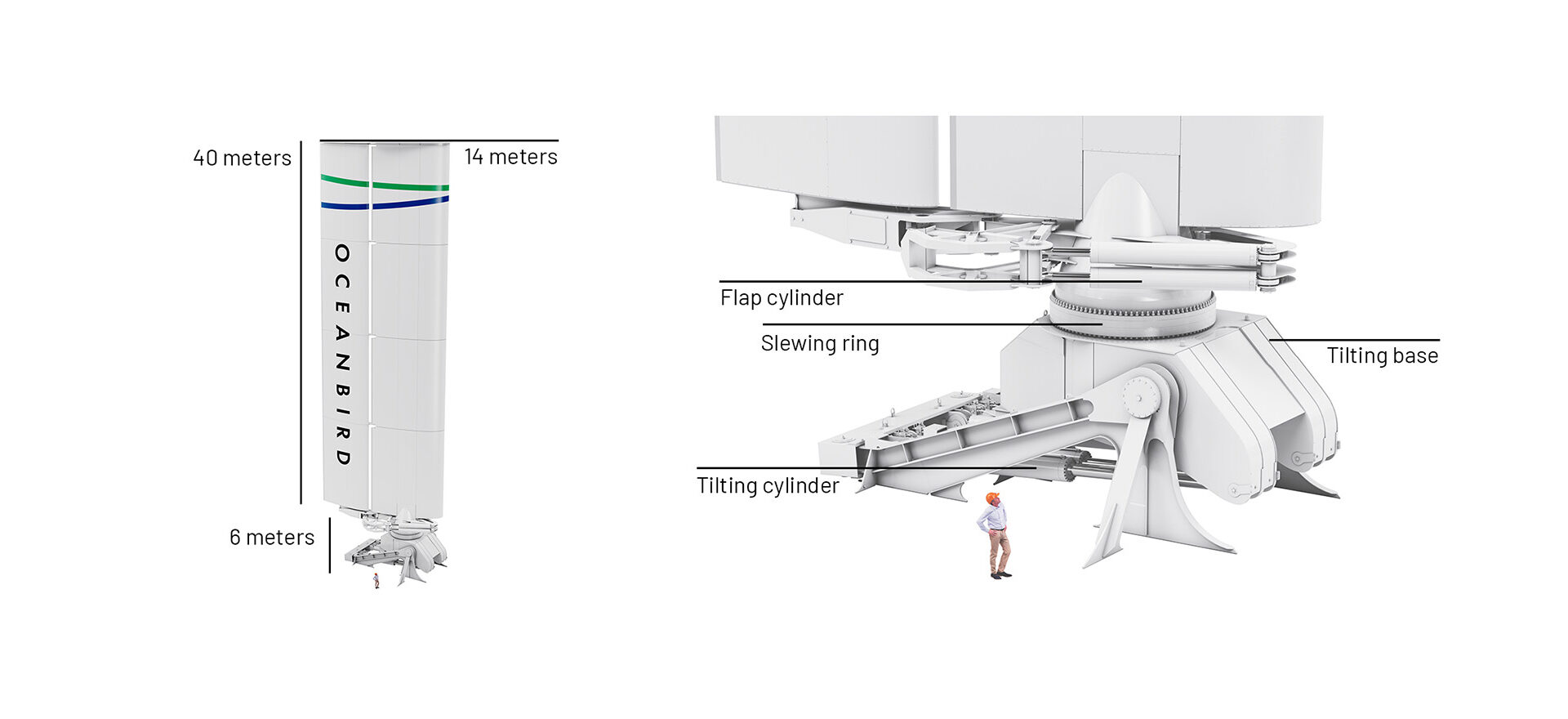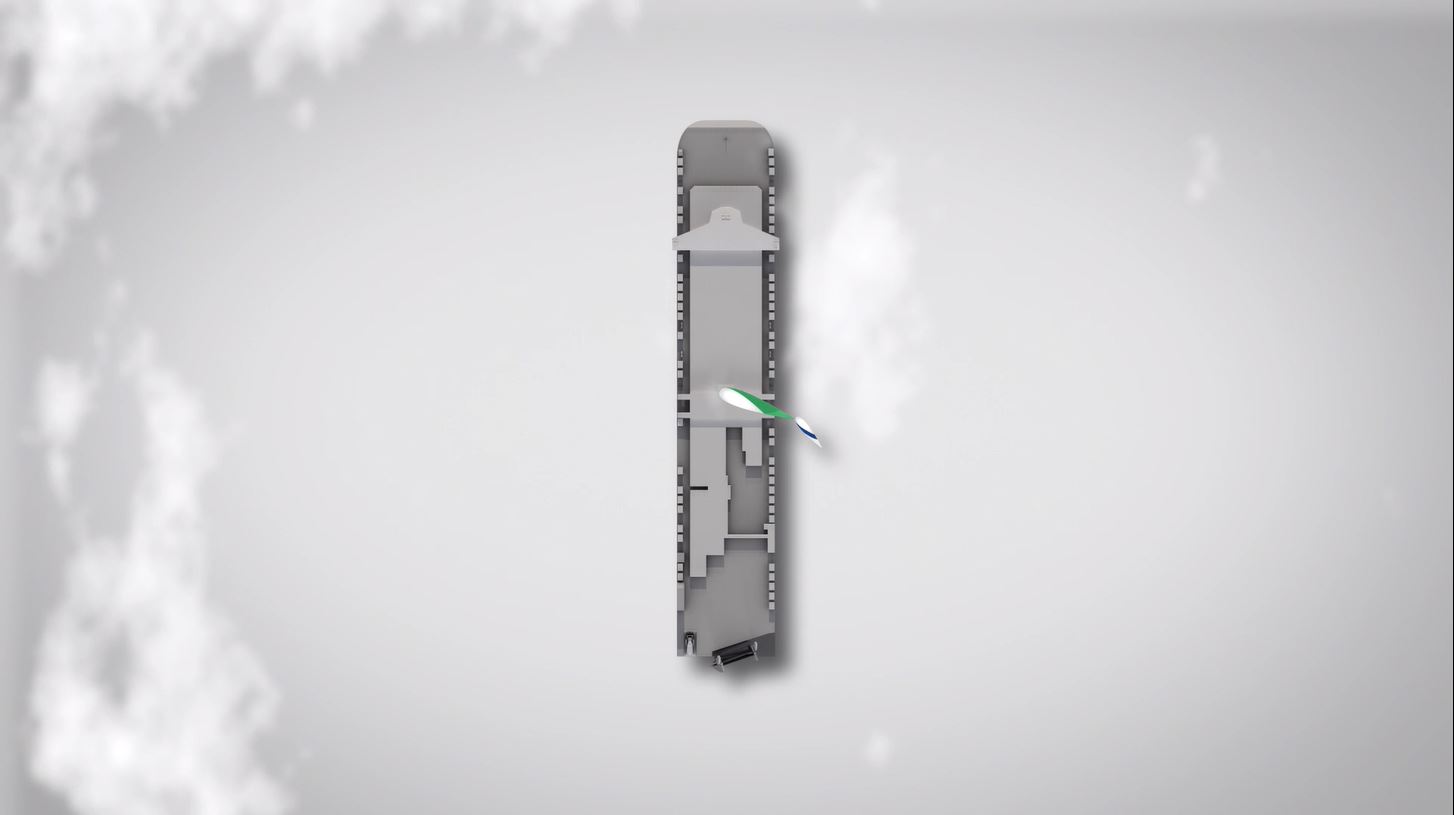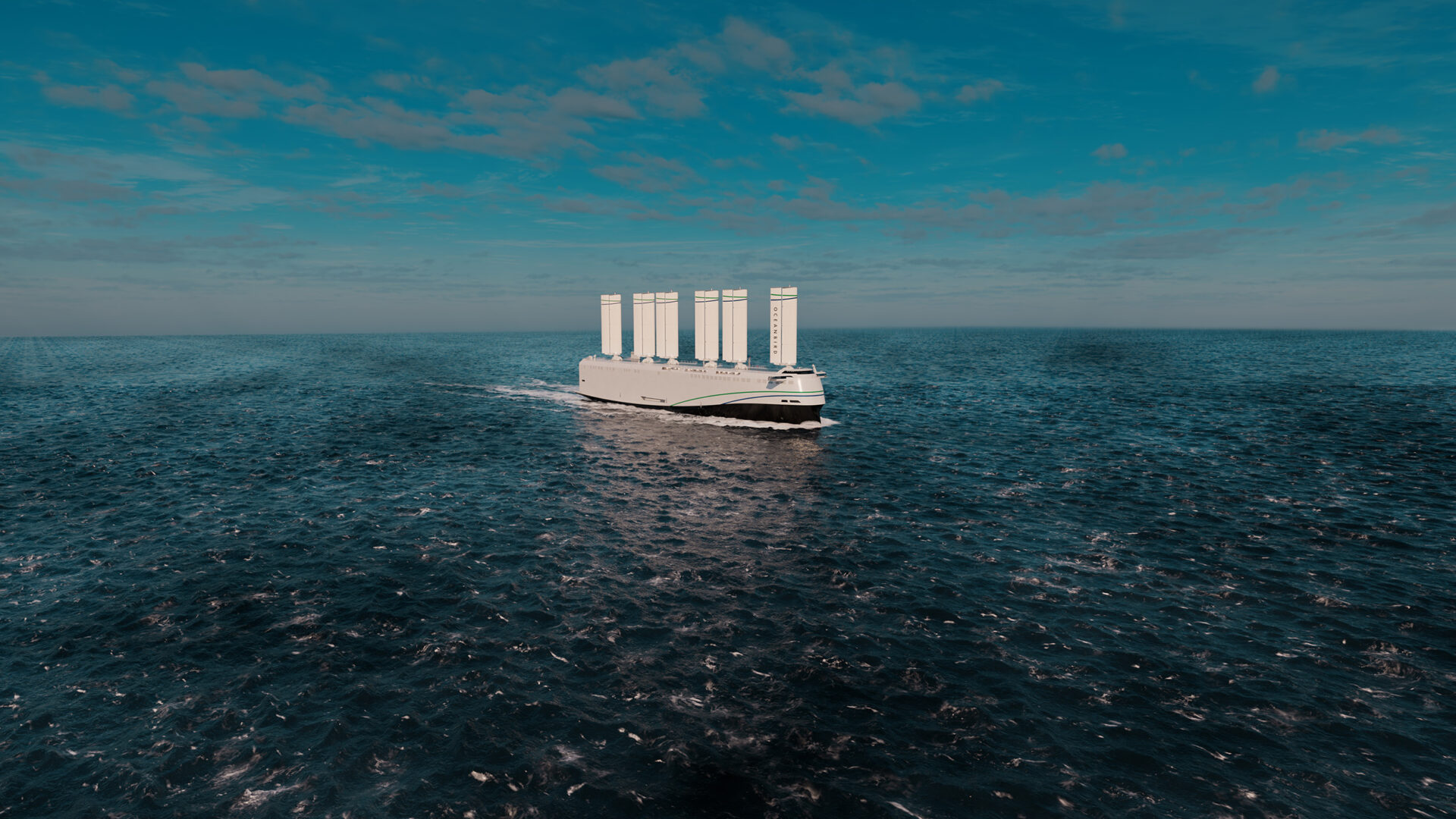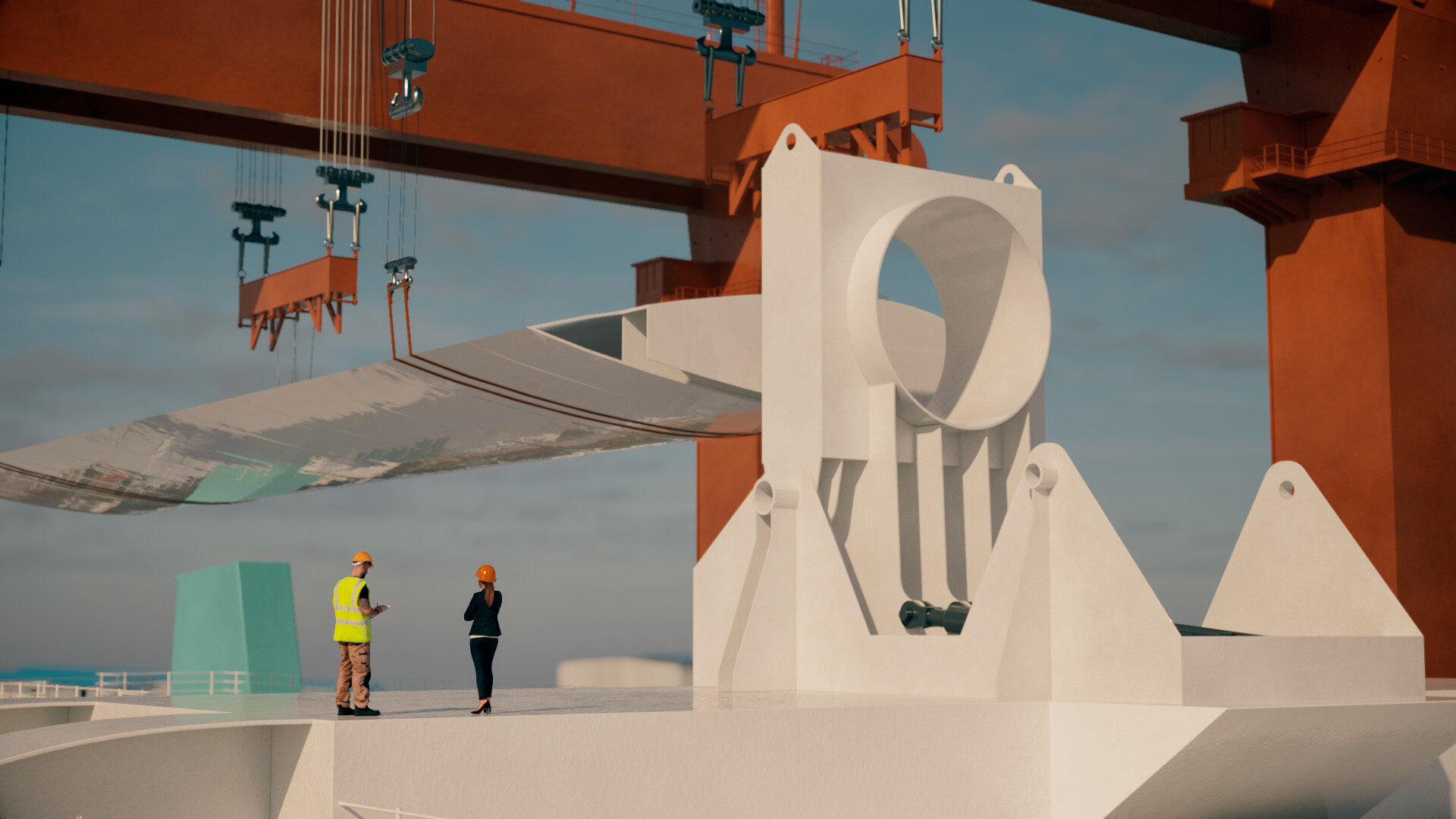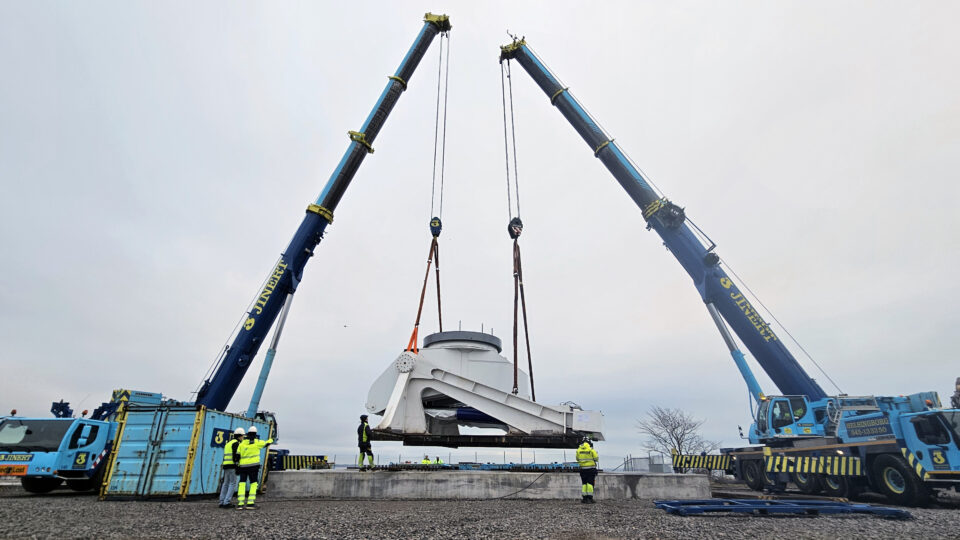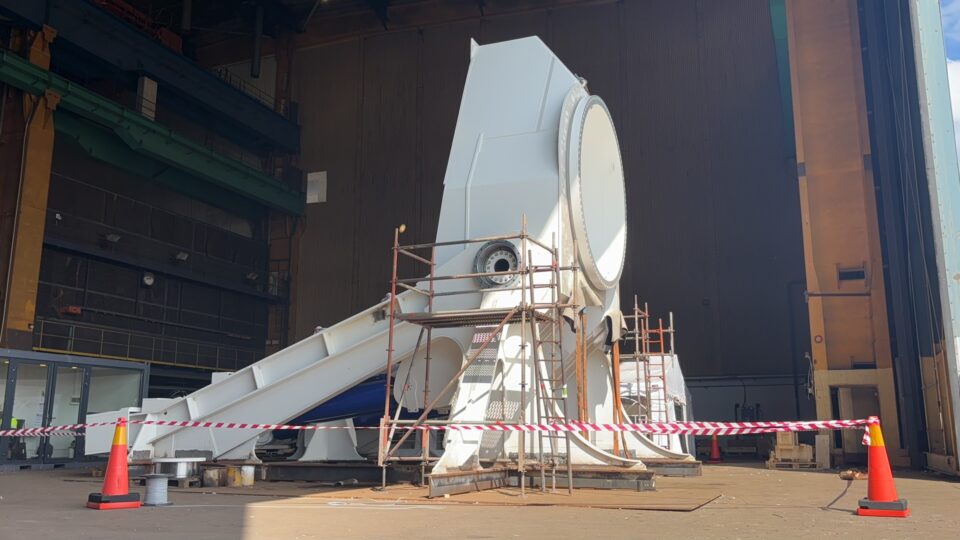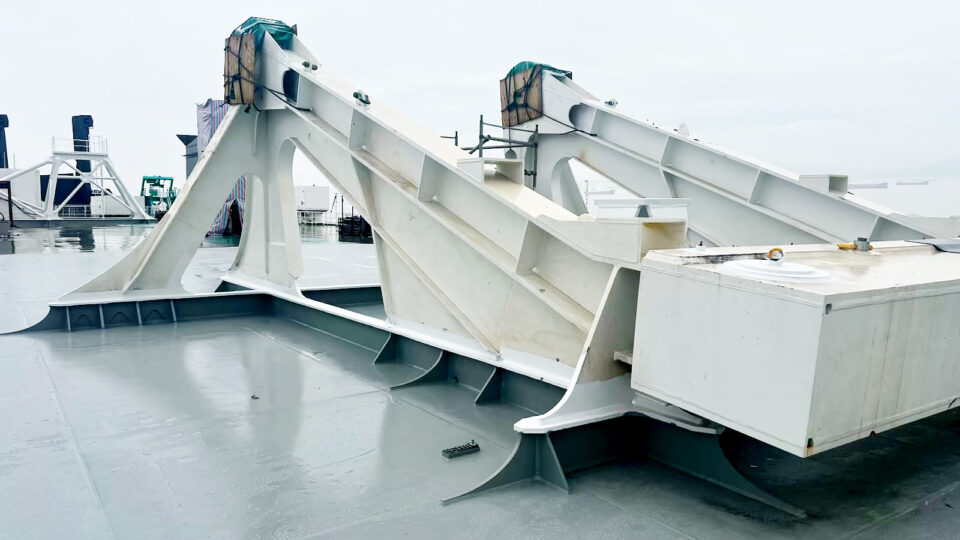Short facts
Height: 40 meters (131 feet)
Width: 14 meters (46 feet)
Total sail area: 560 m2 (6028 f2)
Two segments: Consists of a main sail and a flap, optimizing the aerodynamic forces by creating camber
Materials: High strength steel, glass fiber and recycled PET
Safety philosophy: Always tiltable, even in strong winds and during black-outs
Actuation: Variable hydraulic drive
Energy consumption: Low (passive system)
Performance: One wing sail on an existing RoRo vessel at normal speed, can reduce fuel consumption from main engine with 7-10 % on favorable oceangoing routes. This means a saving of 600 tons of diesel per year, which corresponds to approx. 2,000 tons of CO2
Developed by: Oceanbird – a joint venture between Alfa Laval and Wallenius, founded in December 2021
